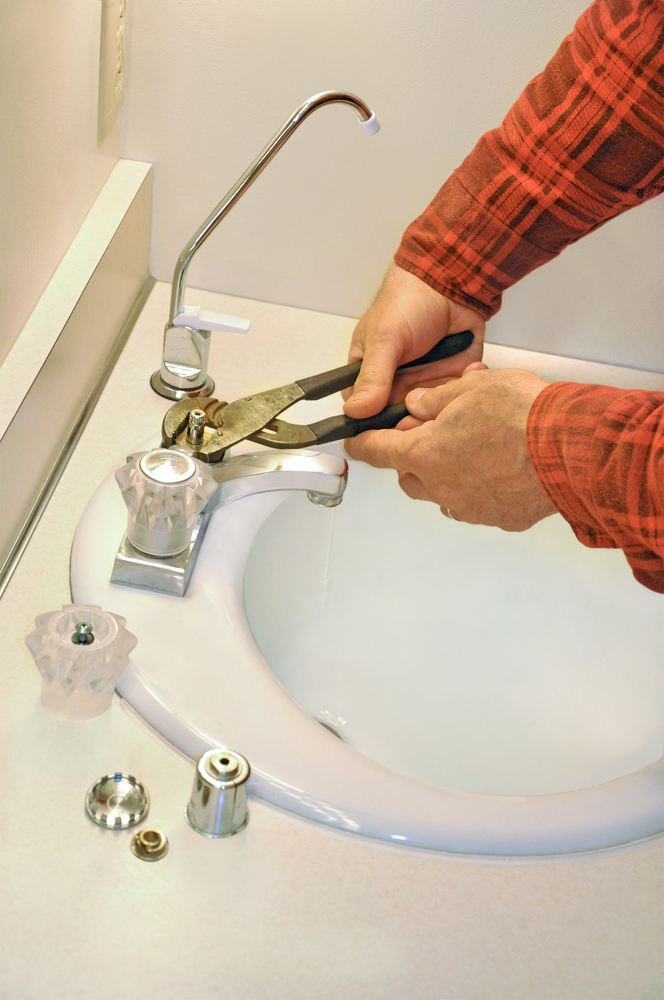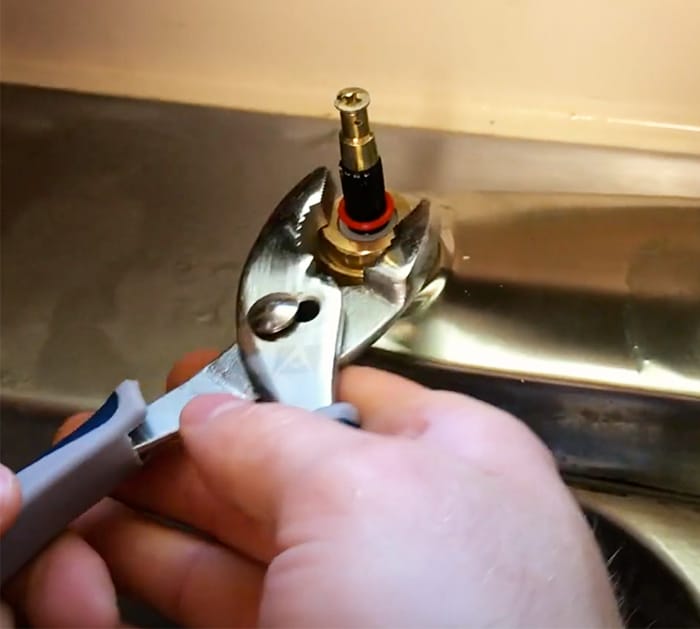They are making a few great pointers on Should I Repair or Replace a Leaky Faucet? as a whole in this post just below.

Trickling taps could feel like a small trouble, but their impact goes beyond just the annoyance of the audio. From drainage to sustaining unnecessary financial prices and wellness risks, ignoring a dripping tap can lead to various consequences. In this article, we'll look into why it's critical to resolve this typical family problem quickly and properly.
Wastage of Water
Ecological Impact
Dripping taps contribute significantly to water wastage. According to the Environmental Protection Agency (EPA), a solitary faucet dripping at one drip per secondly can squander more than 3,000 gallons of water annually. This not just stress water resources but likewise affects ecosystems and wild animals based on them.
Step-by-Step Overview to Taking Care Of a Dripping Faucet
Devices Required
Prior to attempting to deal with a trickling faucet, collect the needed devices, including a flexible wrench, screwdrivers, substitute components (such as washers or cartridges), and plumber's tape.
Common Tap Issues and Their Solutions
Recognize the kind of faucet and the particular issue creating the drip. Typical problems include damaged washing machines, rusty valve seats, or defective O-rings. Describe manufacturer instructions or on the internet tutorials for detailed support on fixings.
Financial Expenses
Enhanced Water Costs
Beyond the ecological impact, leaking taps can inflate water expenses substantially. The collected waste with time translates right into greater utility costs, which might have been avoided with timely repair services.
Potential Building Damage
Additionally, long term dripping can result in harm to components and surface areas bordering the tap. Water buildup can cause staining, rust, and also architectural issues if left unattended, leading to extra repair service prices.
Wellness Concerns
Mold and Mold Growth
The constant presence of moisture from a leaking faucet creates an optimal setting for mold and mildew and mold development. These fungi not just jeopardize indoor air high quality however likewise present health and wellness dangers, especially for individuals with breathing problems or allergies.
Waterborne Illness
Stagnant water in dripping taps can come to be a breeding place for microorganisms and various other microorganisms, enhancing the danger of waterborne illness. Pollutants such as Legionella bacteria thrive in stationary water, possibly causing major diseases when ingested or breathed in.
Do it yourself vs. Expert Repair service
Advantages and disadvantages of DIY Repair
While some might try to repair a dripping tap themselves, DIY fixings feature their very own set of obstacles. Without correct understanding and tools, do it yourself attempts can aggravate the concern or result in incomplete fixings, extending the trouble.
Advantages of Hiring a Specialist Plumber
Employing a professional plumber makes certain that the underlying root cause of the dripping tap is attended to efficiently. Plumbers possess the proficiency and tools to detect and repair tap issues effectively, saving time and lessening the risk of additional damage.
Environmental Duty
Private Payment to Conservation
Taking obligation for taking care of dripping faucets straightens with broader initiatives towards water conservation and ecological sustainability. Every person's actions jointly make a significant effect on maintaining priceless resources.
Lasting Living Practices
By focusing on prompt repair services and adopting water-saving behaviors, individuals contribute to sustainable living techniques that profit both present and future generations.
Preventive Measures
Routine Upkeep Tips
To prevent dripping taps, do routine maintenance such as cleaning up aerators, checking for leakages, and replacing worn-out parts quickly. In addition, take into consideration installing water-saving gadgets or upgrading to more reliable components.
Value of Prompt Services
Resolving leaking taps as soon as they're seen avoids further water waste and possible damages, ultimately saving both water and cash in the future.
Impact on Home Worth
Assumption of Well-Maintained Residential Property
Keeping a property in good condition, consisting of addressing maintenance issues like trickling taps, boosts its regarded worth and worth amongst potential buyers or tenants.
Impact on Resale Worth
Features with properly maintained plumbing components, including faucets, command greater resale worths in the realty market. Dealing with dripping taps can contribute to a favorable impact during residential or commercial property evaluations and negotiations.
Verdict
Dealing with a dripping tap surpasses simple convenience; it's a crucial action toward conserving water, reducing economic expenses, and protecting health and residential or commercial property. Whether through do it yourself fixings or expert support, taking action to deal with leaking faucets is a little yet impactful way to advertise accountable stewardship of resources and contribute to a much healthier, a lot more lasting future.
How to Fix a Leaky Faucet: Step-by-Step Repair Guide
A leaky faucet may seem like a simple annoyance, but if it's not fixed promptly, that leak could cost hundreds to potentially thousands. From water damage to mold, mildew, and high water bills, even a tiny leak can be catastrophic if left unattended. Damage like this can even affect the overall value of your home, so it's important to take the right approach for leaky faucet repair. You may need the help of a plumber in some cases, but we've got a few tips you can try on how to fix a leaky faucet before calling the pros.
Four Faucet Types
When you're learning how to fix a leaky faucet, the first step is knowing what kind of faucet you're working with! There are four common types.
Cartridge Faucets
Cartridge faucets come in one- or two-handled varieties. In one-handled cartridge faucets, hot and cold water combines in a single cartridge. In the two-handled versions, hot and cold water are controlled separately and mixed in the faucet.
Ball Faucets
Ball faucets have a single lever you push up and down to adjust the pressure and rotate to change the temperature. A slotted metal ball controls the amount of water allowed into the spout.
Compression Washer Faucets
They're the oldest type of faucet, but they're still used in many homes — especially older ones. Compression faucets have two separate handles that, when turned, raise or lower the washer that seals a water valve. This valve stops water from flowing through the faucet when it is turned off.
Disc Faucets
Disc faucets rarely need to be repaired due to their maintenance-free design. The water flow is controlled by two discs — the upper one raises and lowers against a fixed lower disc, creating a watertight seal. If your disc faucet starts leaking, you may need to replace the seals or clean residue buildup from the inlets.
Fixing a Leaky Faucet
Step 1: Turn Off the Water
Whether you're learning how to fix a leaky bathtub faucet or how to fix a leaky kitchen faucet, always turn off the water supply to your working area when you're fixing a leak. The last thing you want is a flood added to your list of things to fix.
Look for the shutoff valves below your sink or around the tub and turn them clockwise to stop the water flow. If your faucet doesn't have shutoff valves, you may need to turn off the water for the whole house. Check to make sure it's off by turning the faucet on. If nothing comes out, you're ready to start the repair.
Step 2: Take Apart the Faucet
How you disassemble your faucet depends on the type of fixture you have. You can use a flathead screwdriver to remove the caps on top of the handle or handles for cartridge and compression faucets. Inside, you should see handle screws. Unscrew these with a screwdriver to remove the handle.
Disc- and ball-style faucets will typically have an inlet screw near the handle, and removing that will reveal the interior of the faucet.
Detach the Valve Stem
For cartridge- and compression-style faucets, you'll see the inner valve stem or cartridge once you remove the faucet handles. If you have a compression faucet, unscrew the brass valve stem. If you have a cartridge faucet, pull out the cartridge. If your cartridge has been in place for a while, it may require some tools or extra force to remove it due to mineral deposits.
Examine and Replace Parts
Once you've removed the parts, check them out to confirm what needs to be replaced. You may see corroded rubber washers, O-rings, stems, or cartridges. On a ball-style faucet, check the seats and springs for damage.
If you need to repair a leaky disc faucet, check the inlet and seals on the lower disc.
Once you determine what parts must be replaced, visit your local hardware store. Bring the damaged parts with you to ensure you can purchase the correct components to replace them.
Clean Valves and Faucet Cavity
If you've removed a stem or cartridge, you may notice mineral buildup in the faucet's threads. Use white vinegar to clean the valve seat by soaking it for a few minutes, then scrub it away with a soft toothbrush and rinse with warm water. You can also clean the interior of the faucet in the same way.
Reassemble the Faucet
Once your faucet is cleaned and the required parts have been replaced, it's time to reassemble it. Put the pieces back together and slowly turn the water supply back on. Doing this slowly is crucial because too much initial water pressure can damage the new hardware you've just installed.
https://homewarranty.firstam.com/blog/how-to-fix-leaky-faucet

We had been shown that editorial on from a good friend on a different web property. I beg you pause to distribute this blog if you liked it. Thank you so much for taking the time to read it.